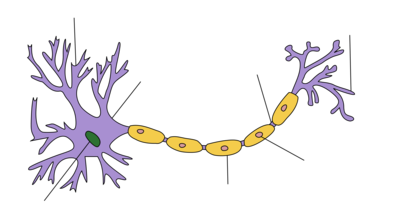Nucleus
 From Conservapedia
From Conservapedia | Cell Nucleus |
|---|

Dendrite
Soma
Axon
Nucleus
Node of
Ranvier Axon terminal
Schwann cell
Myelin sheath |
In biology, the region of a eukaryotic cell about 10 - 20 nanometres in diameter which usually looks dark and round under the microscope. It was identified and given the name long before it was discovered that it contains the chromosomes, which contain the cell's DNA.[1]
In physics, the central part of an atom which contains neutrons and protons.
In astronomy, the bright, central part of a galaxy or comet;
In meteorology, the tiny grains of dust which induce water vapor to condense out into raindrops or snowflakes;
In medicine, some parts of the brain are called nuclei; for example, the nucleus caudatus.
References[edit]
- ↑ Wile, Dr. Jay L. Exploring Creation With Biology. Apologia Educational Ministries, Inc. 1998
Categories: [Cellular Biology] [Physics] [Chemistry] [Astronomy] [Meteorology] [Medicine]
↧ Download as ZWI file | Last modified: 03/11/2023 11:03:45 | 53 views
☰ Source: https://www.conservapedia.com/Nucleus | License: CC BY-SA 3.0
 ZWI signed:
ZWI signed: KSF
KSF